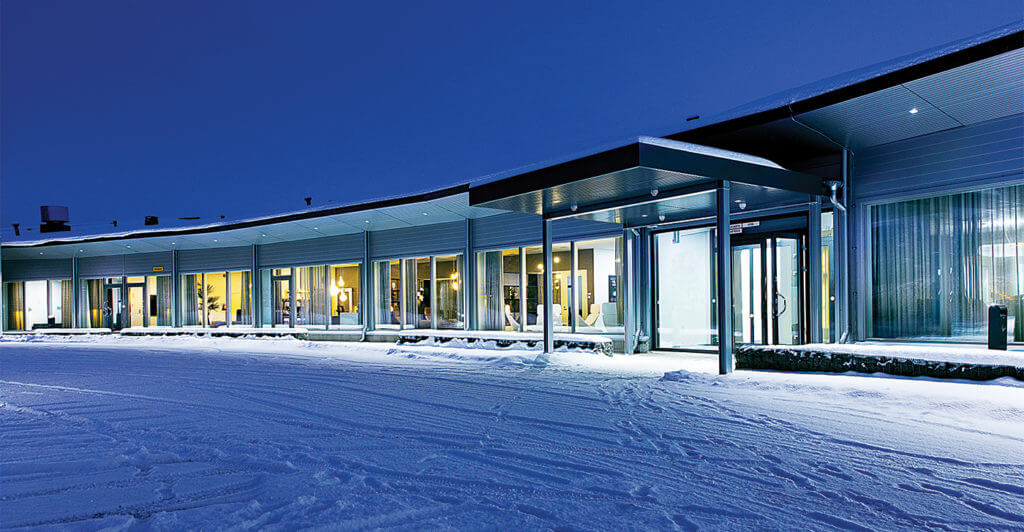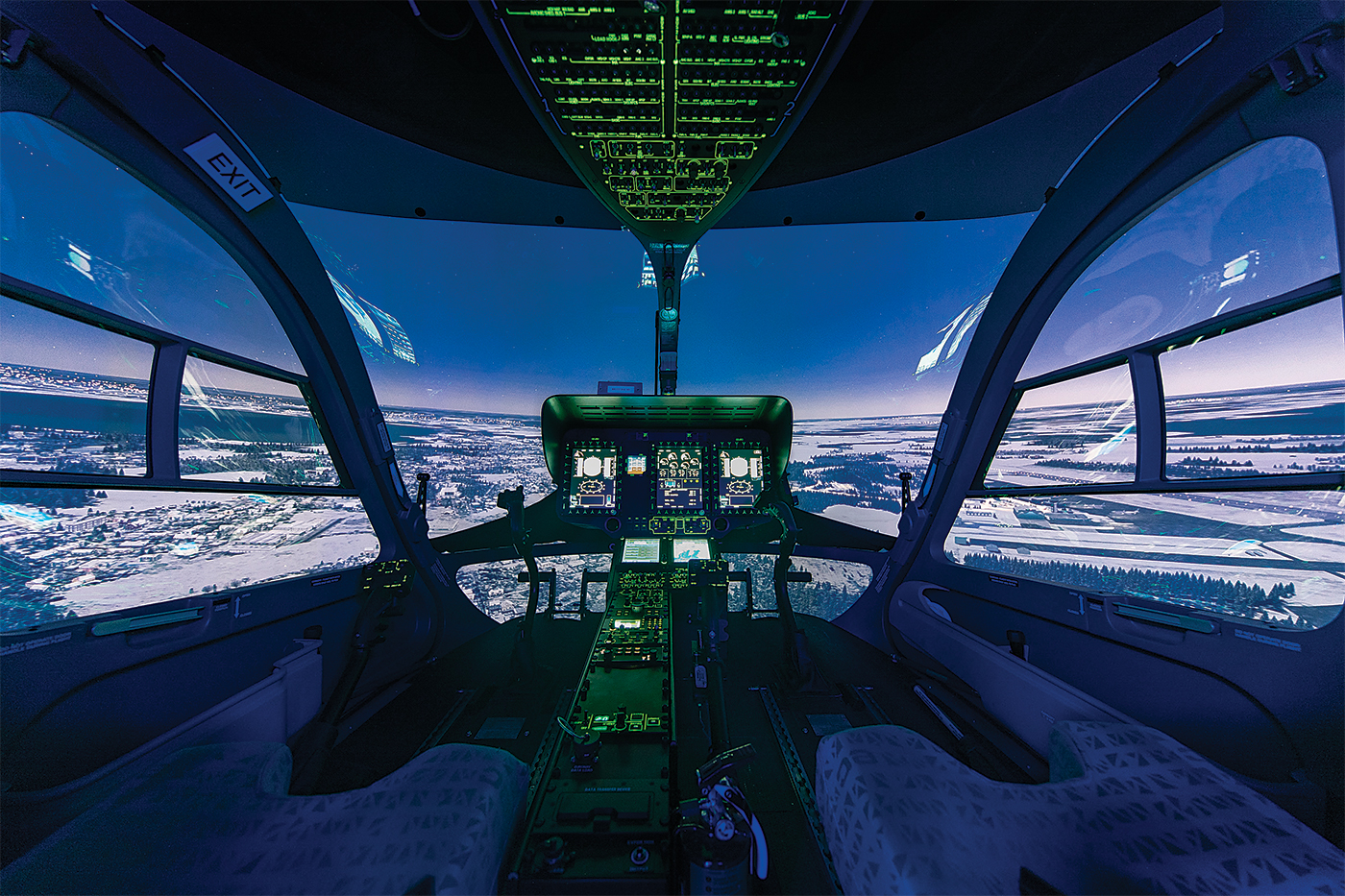Since its inception four years ago, Coptersafety has been working to improve the safety of helicopter operations around the globe. Offering visually-advanced, professional, and detail-oriented simulator training around the clock, the Finnish company provides all the necessities for a pilot-in-training.
With brand-new Airbus H145 and Leonardo AW139 Level D full-flight simulators (FFSs) in current operation, and four additional simulators scheduled to arrive in 2018, Coptersafety is the only independent simulator training company to offer helicopter models from both of these major original equipment manufacturers.
 The new simulators joining Coptersafety’s roster this year include a second AW139, an H125, an AW169, and an AW189.
The new simulators joining Coptersafety’s roster this year include a second AW139, an H125, an AW169, and an AW189.
The company has taken its FFSs to the next level, with each unit approved and capable of simulating flight with night vision goggles (NVGs), one of many strategies to improve helicopter safety statistics.
Perfecting a pilot’s technique and ability to fly in all conditions is Coptersafety’s goal.
When Mikko Dahlman, a licensed helicopter pilot and CEO of Coptersafety, surveyed the devastating effects of pilot error in helicopter crashes, he wanted to create the foundation for change.
He decided to start Coptersafety with an AW139 FFS because of the aircraft’s worldwide popularity with offshore and search-and-rescue (SAR) operations. While safety during flight is a priority 100 percent of the time, the priority is heightened when people’s lives are at stake.
Covering all the bases, this up-and-coming company delivers training for all types of flight, including emergency medical services (EMS), offshore, and SAR. Coptersafety also customizes training to meet the specific needs of each customer.
“The idea is that the training we provide pertains to the specific needs of the customers,” said Jani Kaskinen, Copersafety’s chief commercial officer. “Many of the operators have very specific tasks or environments, and based on that we can tailor the program to meet specifically what they want.”
Coptersafety’s in-house team can build incredibly realistic visuals to match whatever the customer wants to see in the simulator.
“We have tailor-made scenarios for customers,” said Kaskinen. “These could be training areas where [the customer] has oil rigs specific to where they fly, they can be ships that they land [helicopters] on, or they can be home bases.”
These unprecedented, customized simulator visuals are matched with highly-qualified and active instructors.
 Each of Coptersafety’s 15 instructors have at least 20 years of pilot experience and still fly actively, an aspect that is key to the company’s desire to provide top-notch training. Hiring highly-experienced instructors with a range of flying backgrounds is a feature that complements Coptersafety’s customized training programs.
Each of Coptersafety’s 15 instructors have at least 20 years of pilot experience and still fly actively, an aspect that is key to the company’s desire to provide top-notch training. Hiring highly-experienced instructors with a range of flying backgrounds is a feature that complements Coptersafety’s customized training programs.
“If we have an EMS customer, we always put them with an instructor who is actively flying and who has experience from that field of flying or field of operations,” said Kaskinen.
What better way to mold a pilot-in-training than with a professional pilot who has expert knowledge in the same field of flying as the student?
The combination of these training standards provides the basis for Coptersafety’s unmatched level of flight safety education. Dahlman’s pilot career has given him the knowledge to evaluate areas of training that require crucial focus.
“As a pilot, I have witnessed the dangers of complex situations that are part of this job,” he explained.
One important area of focus is the human element of flying–ensuring pilots are emotionally-equipped to handle an emergency during the critical phase of the flight. Poor decision-making in dangerous flying conditions or during emergencies has been identified as the cause of many helicopter accidents.
Coptersafety trains pilots to improve their situational awareness, as well as to improve decision-making strategies and resource management. Kaskinen said the correct use of automation in the cockpit is another valuable skill the company’s instructors teach to pilots.
 Coptersafety also offers recurrent training at its state-of-the-art facility near the Helsinki Airport, allowing pilots to go through the training process according to their individual schedules.
Coptersafety also offers recurrent training at its state-of-the-art facility near the Helsinki Airport, allowing pilots to go through the training process according to their individual schedules.
After two days of theory and six to eight hours of flying in a simulator, pilots watch a recording of their training session while instructors point out areas that need improvement in a realistic environment.
“The atmosphere for training is very good,” said Kaskinen. “The pilots don’t have to be stressed about the instructors or the examiners; they can fully focus on what they’re doing. The feedback from our customers is very positive due to this because they feel that the instructors and examiners are very fair and very professional.”
Coptersafety’s next-level service is an essential characteristic that will take the company to new heights as it moves forward.
Offering a variety of FFSs with tailored visuals and superior instructor expertise, the company is well positioned to augment safety in the helicopter industry. And with an incredibly convenient location, pilots can easily access the training facility from almost anywhere in the world.
“We have a purpose-built, modern facility, and a lot of the details in the interior are designed for the pilots to feel comfortable and to spend time here,” said Kaskinen. “In Finland, education is ranked quite highly, so we have very good training methods. That’s also one area that we can be very proud of.”









